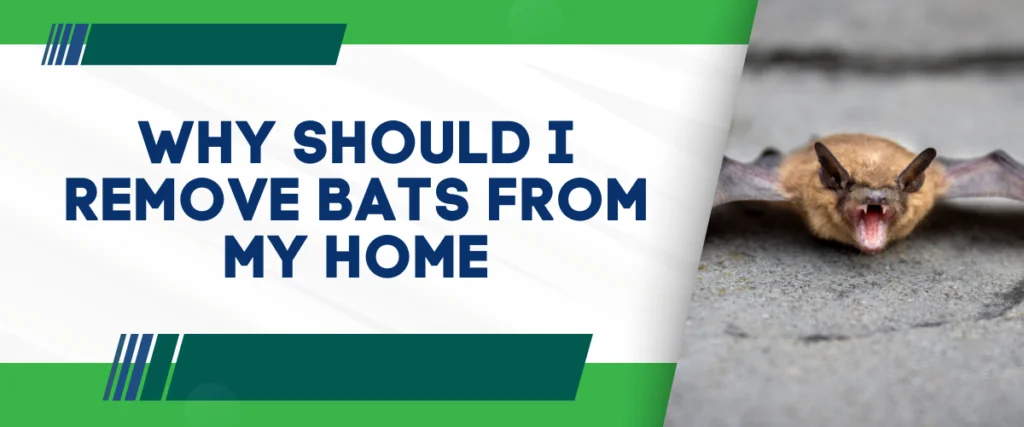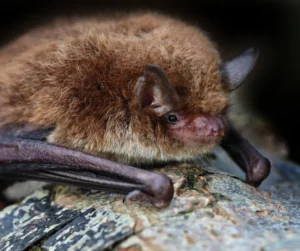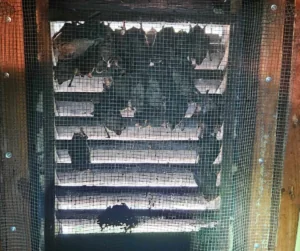
During the early Spring months, one of the most common nuisance wildlife you might find in your home are bats. Bats are nocturnal, flying mammals common throughout the Fredericksburg, VA area. During the fall, bats will be looking for places to settle down, and a dark, safe, warm attic with an easy entrance is a perfect place for them to make their home. Some people find bats cute, and they are able to eat thousands of insects a night, which keeps lots of homeowners happy. Bats are also becoming endangered by the onset of White-nose Syndrome, so with all of that, you may be wondering why you should remove bats from your home at all. The real reason why bats should never be allowed to stay in your home is because they carry diseases like rabies and their massive piles of guano can spread illnesses through the air like histoplasmosis. Bats are also carriers of parasites like bat bugs and fleas. If you’ve begun to see the evidence of bats in your home, like piles of bat guano, urine or grease stains on attic walls, bats entering and exiting through holes in the soffit, or if you begin hearing scratching sounds, then contact Summit Wildlife Removal today for safe, humane bat removal in the Fredericksburg, VA area.
Rabies, Bat Guano and Histoplasmosis

Rabies isn’t the only disease that bats can spread, they can also spread the disease histoplasmosis through their guano, or droppings. Histoplasmosis is a fungal infection caused by spores in the air that can be released when disturbing or moving bat guano. Bats poop a lot, so over time they can create massive piles of guano in their home, and with some bat colonies, it can even collapse ceilings. Due to the risk of histoplasmosis and rabies, it is never recommended that you attempt to remove a bat or bat colony yourself. Always leave removal and cleanup to licensed experts like Summit Environmental Solutions.
Bat Bugs and Other Parasites
Another reason why bats should be removed from your home is because they can carry numerous parasites, including the infamous bat bug. Bat bugs are very similar to bed bugs, and will feed on the blood of bats. Bat bugs do not live on the host bat however, and if there are bats inside your attic, there might also be an infestation of bat bugs living in your home. Bat bugs are able to feed on humans, but they typically do not, as they prefer bats.
Bats can also carry fleas, which can spread to people and pets inside the home.
How to Look for Evidence of Bats in your Home

Look for the entry points, the specific places in your home where bats are entering and exiting. These can often take the form of small cracks or holes in your soffit or gable vent. Attic vents make a perfect entry point for a bat looking to get inside. Bats can also get inside through fascia boards, which hold gutters in their place and close off rafters. They are also able to sneak in through a damaged fascia board. Siding and eaves with cracks or holes can also allow bats in.
Another way to tell if you have bats is to listen for them. If you hear the flapping of wings combined with scratching sounds coming from inside your walls or in your attic, then you might have bats trapped in your home.
Watch the outside of your home during dusk, if you see bats leaving your home to hunt for insects, then they most likely have set up a colony in your attic.
Remember: Bats Are Protected Under Law













